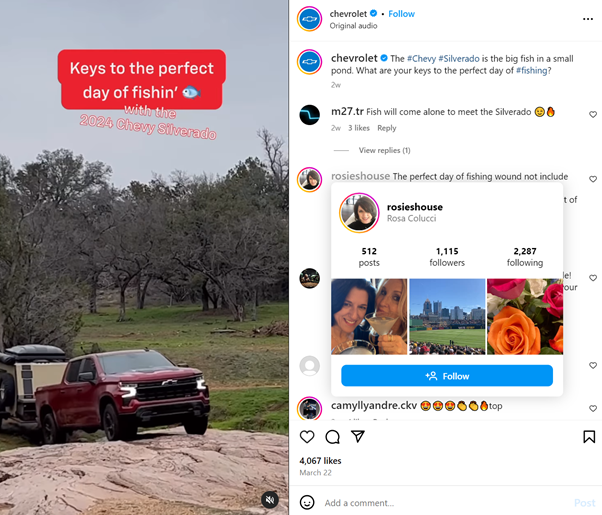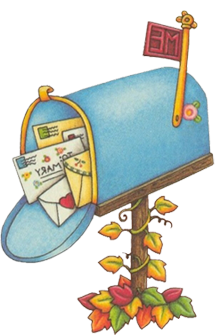Why Are Short-Form Content and Long-Form Content Both Important?
Table of Contents
What is Short-form Content?
As the name implies, short-form content refers to all types of brief content that can be digested quickly. Many content marketers generally consider it to be any content that is less than 1000 to 1200 words. However, that categorization isn’t generally true.
Instead, short form content is any piece of content that contains only the essential details about a topic packaged in concise bits. As such, it can be blogs, social media content, infographics, short videos, or landing pages. It could be in any form that is quick and easy to read, watch, or listen to.
Benefits of Short-form Content
Brands and their customers can enjoy the following advantages of short-form content creation:
1. Short-form content creation requires less resources
The brevity of short form content ensures that it takes less effort to put it together, especially when you’re vast about the topic. The creation process doesn’t require extensive research, sifting through large data, or conducting multiple interviews.
Consequently, you don’t have to commit excess resources in terms of time and money to the creation process.
2. Short-form content ideas appeal better to the audience
There’s just so much content on the internet these days as the penetration rate of internet services and internet-enabled devices continues to rise. This content overload is very exciting for the average user as they want to enjoy different types of content.
Consequently, their preference has gradually shifted towards short, concise, and scannable content.
3. The audience responds better to short-form content
According to The Leap, a whopping 73% of consumers prefer to learn about a product or service by watching a short-form video. This statistic is consistent with the rapid growth of the popular video-sharing platform TikTok and the subsequent incorporation of YouTube Shorts and Instagram Reels on YouTube and Instagram. Clearly, the audience loves content that delivers the main point in a short time.
4. Short-form content boosts traffic
Short-form content present the most important details about a topic in a way that piques curiosity. For instance, short videos can lead a potential listener to a full podcast. Likewise, an insightful infographic can lead a reader to an exhaustive guide.
As a result, the brand gets better organic traffic, while the reader gets easy access to much-needed information.
5. Short-form content is mobile-friendly
Short-form content is much easier to skim. More importantly, it is better suited to the small screen sizes of many mobile devices.
With the majority of users accessing websites via mobile devices, short form content is a smart choice for any brand. Their mobile-friendliness enhances the user experience and consequently increases the conversion rates.
For instance, this short infographic by Airbnb quickly describes the brand’s impacts through a relevant statistic that can be viewed on any mobile device at a glance.
What is Long-form Content?
Long-form content refers to any piece of content that discusses a topic in great depth. This kind of content is structured to give your reader a thorough understanding of a topic. Therefore, it provides high-quality information backed by research and data.
Considering the depth of such content, many content marketers generally categorise long-form content as anything above 1000 – 1200 words. However, using that as a general rule of thumb isn’t entirely correct. Thoroughness, rather than word count, is a more accurate factor for identifying long-form content.
For instance, our long-form blog about Google’s broad core March 2024 updates is a thorough guide to Google’s March 2024 algorithm enhancements and spam policy updates. Although it isn’t too lengthy, it unpacks all there is to know about that topic.
Most long-form content is in formats such as guides, white papers, long blogs, research reports, tutorials, case studies, etc.
Benefits of Long-form Content
1. Long-form content is informative
A long-form content provides the perfect opportunity for you to demonstrate your ability to provide rich, in-depth knowledge on a topic of interest to your audience. They answer the reader’s questions by using different assets like text and infographics in a bid to drive the message home.
2. Long-form content confers authority
The opportunity to provide this much insight helps you position yourself as an expert in any niche. Additionally, you could decide to consult other experts and include their opinions in your article as you aim to produce a well-researched piece.
As a result, long-form content gives you the opportunity to earn backlinks that further demonstrate your website’s credibility.
3. Long-form content boosts your SEO
Backlinks earned from long-from content demonstrate to search engines like Google that your website has authority. In addition, search engine algorithms also give precedence to high-quality, long-form content in a bid to serve up the most informative content to searchers.
Therefore, long-form content positively impacts your search engine optimisation efforts to a large extent.
4. Long-form content increases website traffic
Interestingly, long-form content is more likely to attract new visitors to your website due to its built-in shareability factor. Multiple survey reports reveal that readers are more likely to share long-form content on social media.
This social sharing is one of the quickest ways of boosting your website’s organic traffic.
5. Long-form content remains relevant over a long time
The fact that long-form content offers depth by covering different aspects of a topic using different methods means they can be repurposed into other formats. This repurposing opportunity makes it easy to access different audience segments with the same type of content.
As a result, long-form content tends to remain relevant for extended periods.
Best Practices for Integrating Short-Form and Long-Form Content into Your Strategy
Clearly, both long-form and short-form content offer different advantages to any brand. Therefore, it is advisable to incorporate the two types of content into your content marketing strategy.
Here are some best practices to help you integrate both into your strategy:
1. Create a Content Calendar Including Both Types of Content
A successful content marketing strategy requires consistent content updates, progress tracking, and customer engagement. Therefore, staying organised is crucial to getting your desired results. All these can be overwhelming when you’re trying to combine two types of content.
Here are some tips for creating a content calendar that includes both types of content.
- Perform a comprehensive content audit.
- Leverage content calendar tools like Google Sheets, Notion, Google Calendar, etc.
- Itemise the types of content you need to create
- Schedule all steps involved in the content creation services process
- Add each step to your content calendar
2. Repurpose long-form Content into Short-form Pieces and Vice Versa
Content repurposing reduces the burden of searching for new content ideas. It helps you exploit existing content in the best way possible.
You can repurpose long-form content into short-form content through the following techniques:
- Creating custom graphics that highlight the main point of a blog
- Summarising the main points of the blog in a short video as a TikTok reel, YouTube short, or Instagram reel
- Transcribing a podcast into a written piece
- Creating graphics that highlight expert quotes
- Uploading webinar slides to slide share
Conversely, short-form content can be repurposed into long-form content using the following techniques.
- Create a long-form blog format for a social media post already generating attention
- Upload short-form videos on multiple websites
- Create podcasts based on short-form videos gaining audience attention
There are plenty more ideas on how to do this. You just have to be creative and identify what works best with your audience.
3. Determine the right format for your content using keyword research
While it may be difficult to decide the correct format with absolute certainty, keyword research makes the prediction more accurate.
Through keyword research, you can get insights into the content of the queries your audience is searching for online. The following tips can help you determine the right content format for any content idea:
- Identify the principal content tips in your niche
- Analyse your keywords
- Identify each keyword’s search intent, competition, and type. For instance, informational keywords starting with “what” should be mapped to long-form blog posts, while head keywords are ideal for infographics
- Conduct A/B tests of some keywords for different content formats to measure results.
4. Understand what works best for your audience using analytics
Starting with A/B tests, you need to know what works and what doesn’t with your audience. Content marketing analytics tools like HubSpot, Ahrefs, Google Analytics, etc, can help you determine how well each content format is resonating with the audience.
Examples of Both Types of Content
The following are some short and long-form content examples of brands incorporating into their strategy.
A. Airbnb
Airbnb is an online marketplace for short—and long-term homestays. The platform connects homeowners with travellers and tourists looking to rent.
While the company’s business model is unique, as it finds a sweet spot between demand and supply, its content marketing efforts are even more astonishing. The company has found a perfect way to incorporate both short—and long-form content into its strategy using multiple platforms.
Short-form content
Apart from showcasing cool apartment pictures via their Instagram channel, the company’s marketing team tells interesting stories about travel and tourism that make the audience crave that “Airbnb experience.”
For example, the image below shows a short-form video post by Airbnb captioned with a short story about two Airbnb hosts, Wanda and Jamal, who made an extra plate for their first Airbnb guest after eight years.
Such a caption is short, yet it reels the audience in with the right message.
Likewise, their long-form content strategy further enhances things by generating market loyalty through transparency. They create user-focused content marketing reports that detail their offerings so that potential customers who the short-form content has reeled in know exactly what to expect.
Awesome stuff!
B. Chevrolet
Chevrolet is also another company that seamlessly implements both short—and long-form content strategies that resonate properly with the audience.
Their long-form content highlights the company’s social elements by positioning it as more than a car company. Instead, it positions itself as a company that cares, creating an entire section on its website for content on social elements like military heroes, sports, and fighting terminal diseases.
This idea is reinforced on their short-form content platforms like Instagram, where they illustrate the roles of their vehicles in creating happy memories for the everyday person. This post below shows a Chevrolet user taking a Chevy truck on a fishing adventure.
Conclusion
You need short-form content to catch your audience’s attention quickly and long-form content to provide in-depth answers to their overarching questions. Although the former is relatively easier to create, you need both in your content marketing strategy.
To achieve that, you’ll need a content calendar containing the two, as you repurpose both types into different formats. Keyword research can help you match your content ideas to the perfect format based on search intent and competition; however, you’ll still need analytics tools to know which ones resonate with your audience the best.
And in the end, you might turn out to be the next Airbnb.
But first, you’ll need to assess your current content marketing strategy to discover ways each content format might fit your brand. If you need more information, tips, or hacks to do that effectively, you can subscribe to our newsletter and tap into our years of content marketing experience.
We can guide you through the whole process.












About The Author
Payel Mukherjee
Payel dreams about travelling the world and relaxing in quaint beach cafes – when she is not helping brands find real growth through powerful content experiences. She loves waging the war against mediocre content marketing and is passionate about entrepreneurship and startups. She is also a Darjeeling tea junkie and the founder of Justwords.